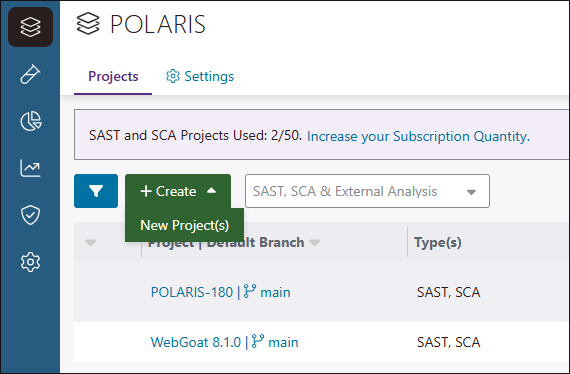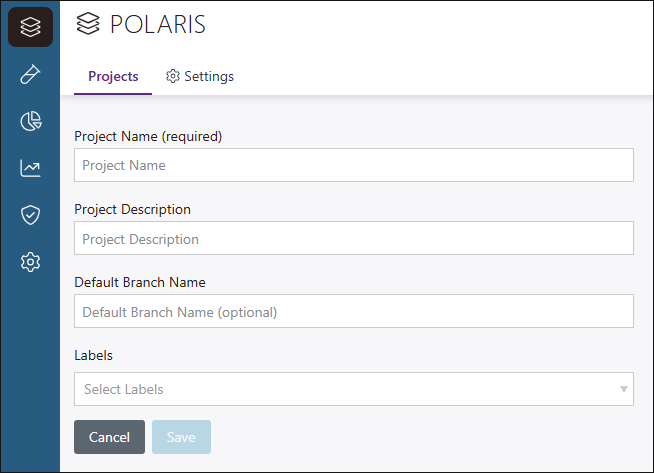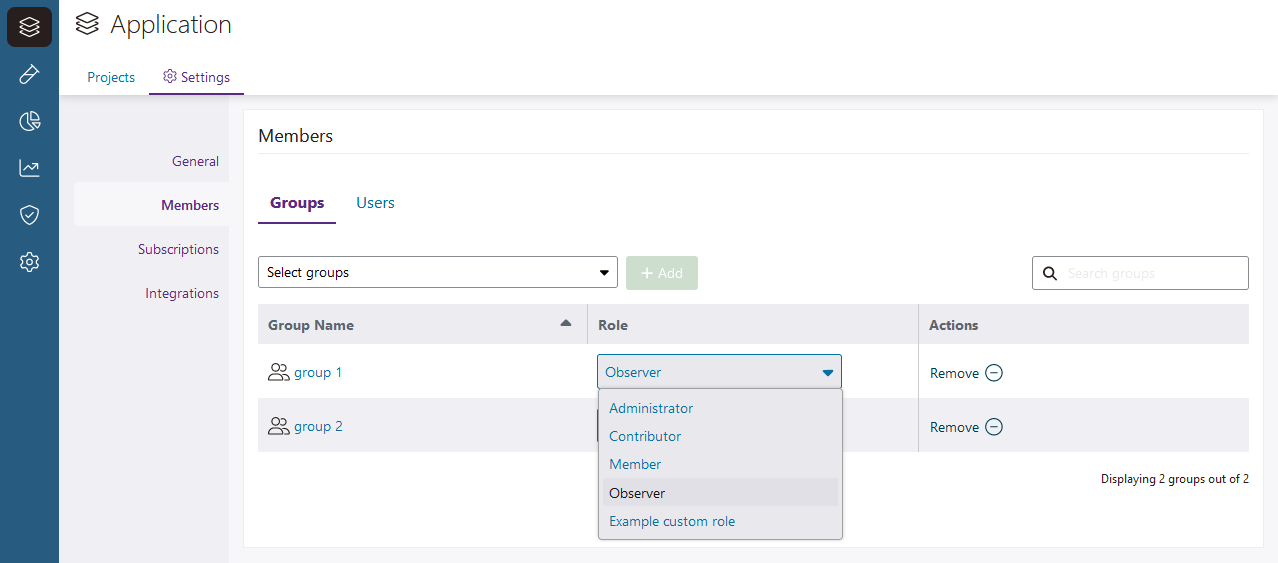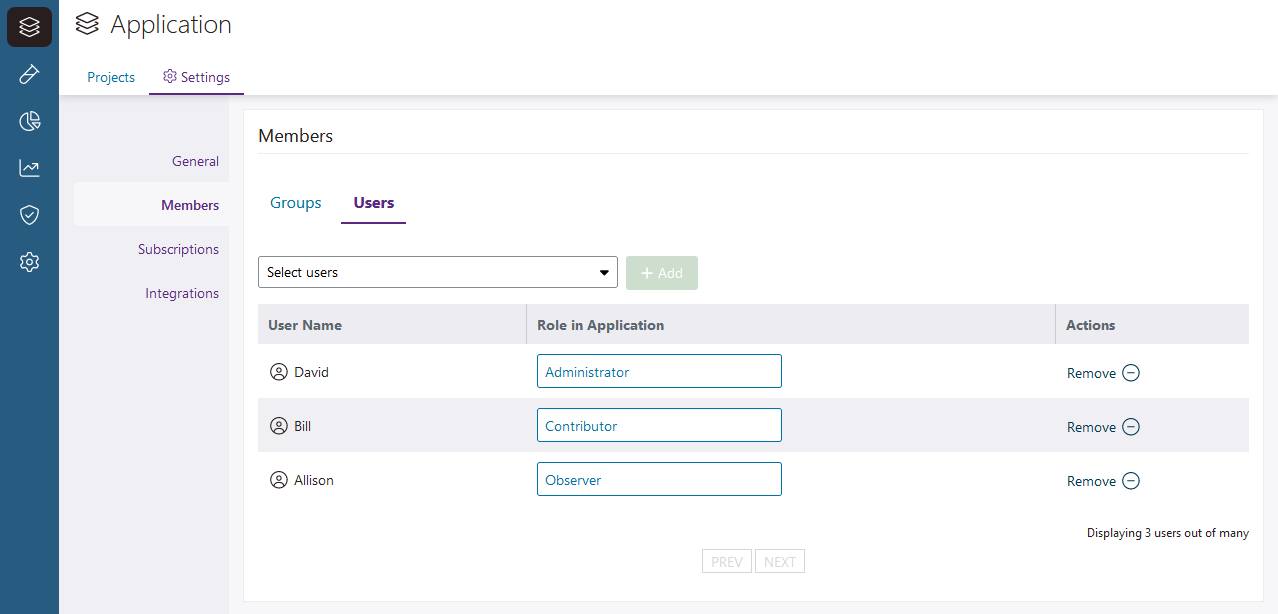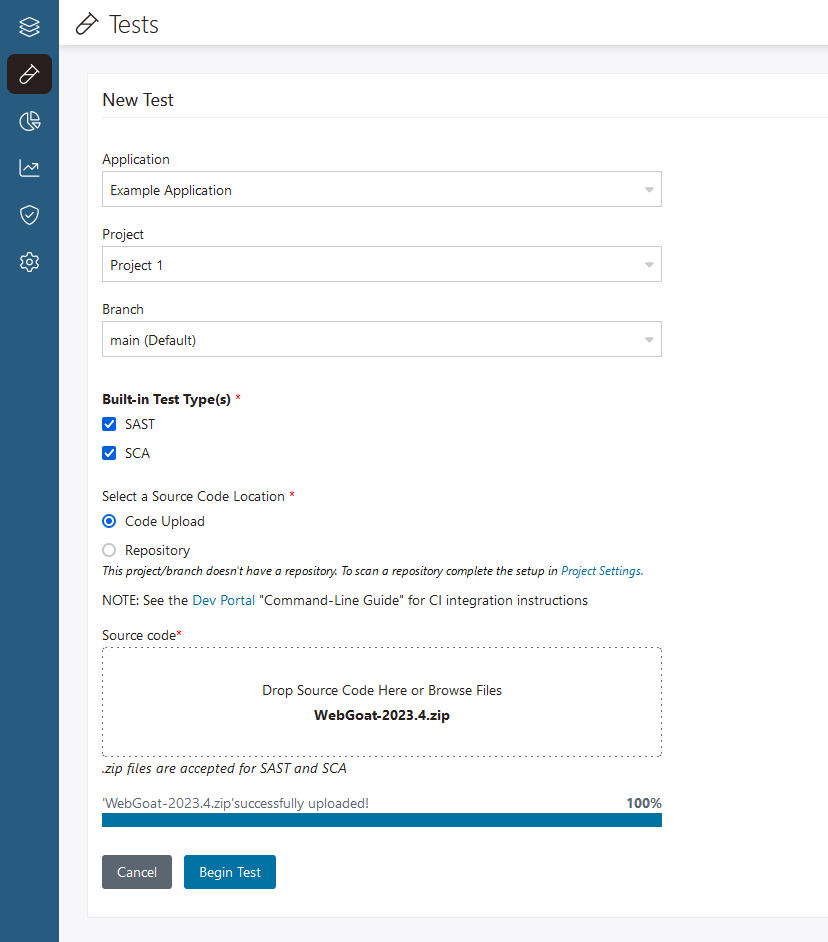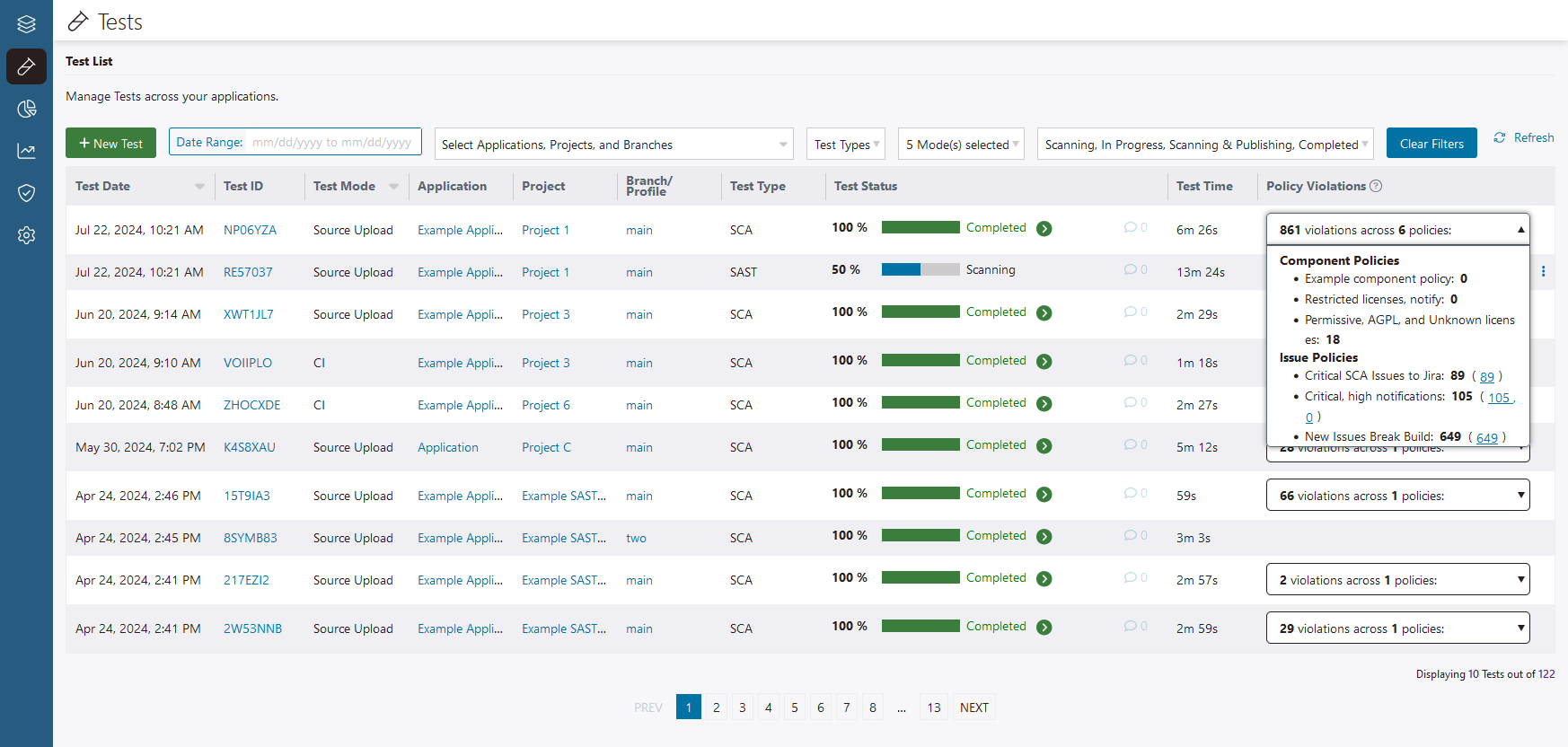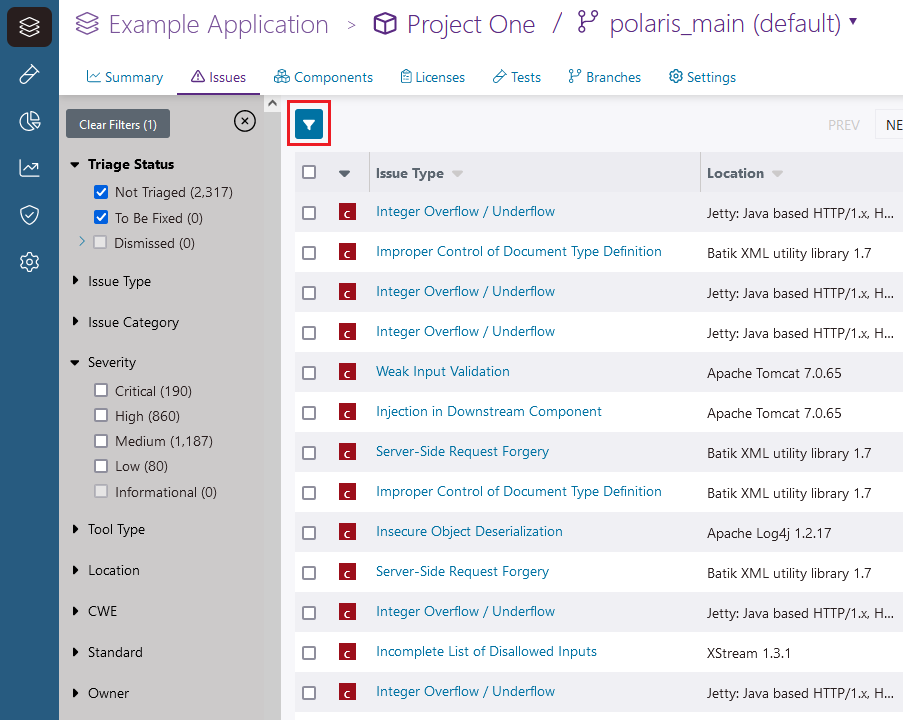Get started: Application Admin
Depending on the size of your organization, the applications and projects might already be set up by the Application Manager, or you might still have some work to do. This tutorial will give you an overview of all the tasks you might need or want to do as an Application Admin.
By the end of this tutorial, you will:
- Add a SAST & SCA project to your application
- Add users to your application
- Upload source files and start SAST and SCA tests
- Monitor tests and view results
- Filter and review issues
- Triage issues
Add a SAST & SCA project to an application
Review policy settings
In Polaris, policies automate actions when issues or components are detected in tests, and automate scans of projects or branches on a weekly or daily basis.
Add users and groups to an application
- After you open an application, go to .
-
To give groups access to the application:
-
To give users access to the application:
Upload files and start testing
Note: Before uploading, see the limitations for uploads on the Support page. There are guidelines for file type and size.
Monitor tests and get test results
Filter and review the issues
You can get to the issues in either of the following ways:
- Go to Portfolio, select an application, select a project, and open the Issues tab.
Note: Use the branch pulldown (near the top of the page, next to the project name) to view test results for different branches in your project.
- Go to Tests and select the branch name in a completed test's row.
Triage
There's more than one way to triage issues in Polaris. See Ways to triage issues in Polaris for all the details
 | Dev Portal
| Dev Portal